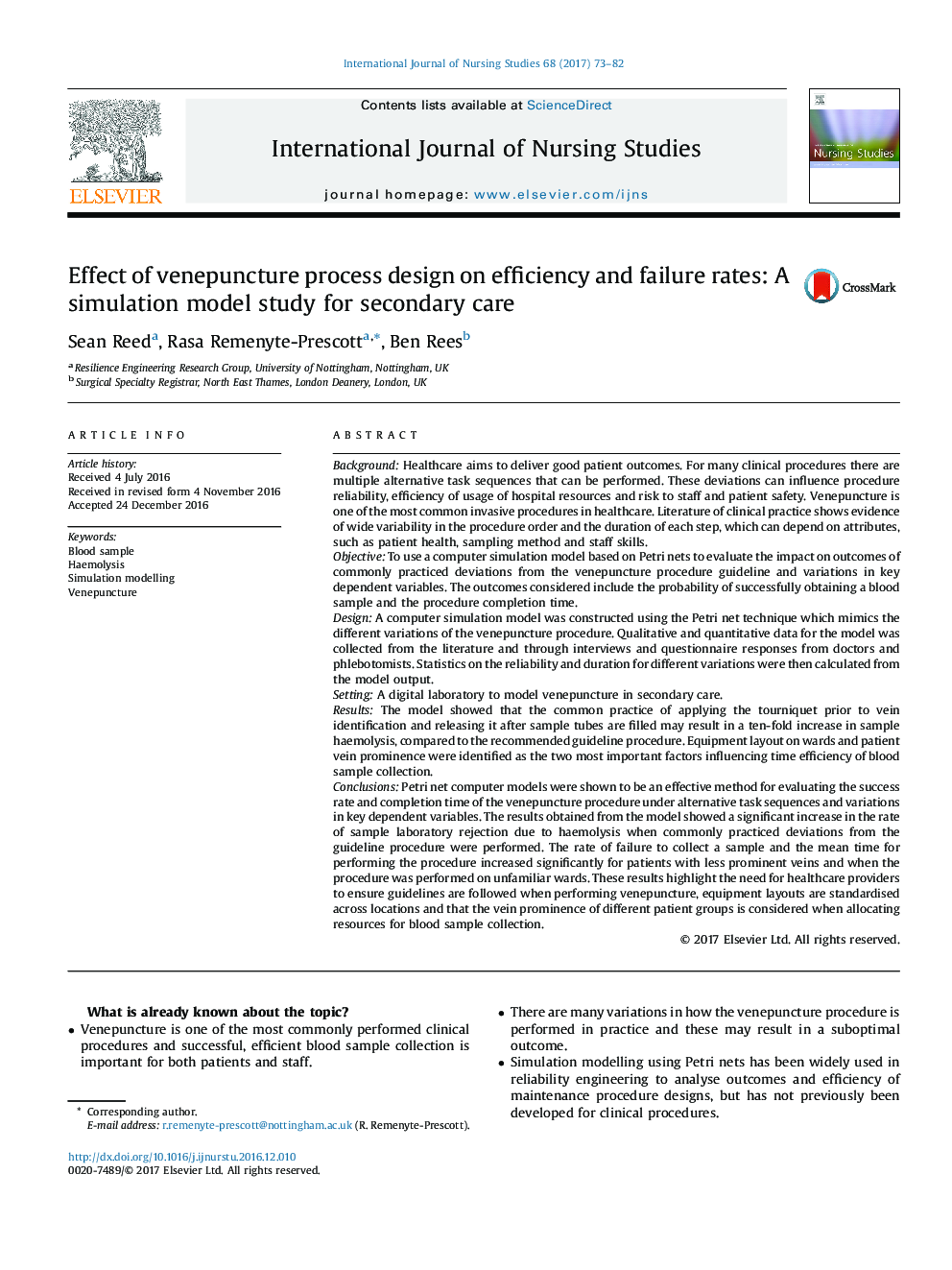| کد مقاله | کد نشریه | سال انتشار | مقاله انگلیسی | نسخه تمام متن |
|---|---|---|---|---|
| 5121028 | 1486501 | 2017 | 10 صفحه PDF | دانلود رایگان |
BackgroundHealthcare aims to deliver good patient outcomes. For many clinical procedures there are multiple alternative task sequences that can be performed. These deviations can influence procedure reliability, efficiency of usage of hospital resources and risk to staff and patient safety. Venepuncture is one of the most common invasive procedures in healthcare. Literature of clinical practice shows evidence of wide variability in the procedure order and the duration of each step, which can depend on attributes, such as patient health, sampling method and staff skills.ObjectiveTo use a computer simulation model based on Petri nets to evaluate the impact on outcomes of commonly practiced deviations from the venepuncture procedure guideline and variations in key dependent variables. The outcomes considered include the probability of successfully obtaining a blood sample and the procedure completion time.DesignA computer simulation model was constructed using the Petri net technique which mimics the different variations of the venepuncture procedure. Qualitative and quantitative data for the model was collected from the literature and through interviews and questionnaire responses from doctors and phlebotomists. Statistics on the reliability and duration for different variations were then calculated from the model output.SettingA digital laboratory to model venepuncture in secondary care.ResultsThe model showed that the common practice of applying the tourniquet prior to vein identification and releasing it after sample tubes are filled may result in a ten-fold increase in sample haemolysis, compared to the recommended guideline procedure. Equipment layout on wards and patient vein prominence were identified as the two most important factors influencing time efficiency of blood sample collection.ConclusionsPetri net computer models were shown to be an effective method for evaluating the success rate and completion time of the venepuncture procedure under alternative task sequences and variations in key dependent variables. The results obtained from the model showed a significant increase in the rate of sample laboratory rejection due to haemolysis when commonly practiced deviations from the guideline procedure were performed. The rate of failure to collect a sample and the mean time for performing the procedure increased significantly for patients with less prominent veins and when the procedure was performed on unfamiliar wards. These results highlight the need for healthcare providers to ensure guidelines are followed when performing venepuncture, equipment layouts are standardised across locations and that the vein prominence of different patient groups is considered when allocating resources for blood sample collection.
Journal: International Journal of Nursing Studies - Volume 68, March 2017, Pages 73-82
